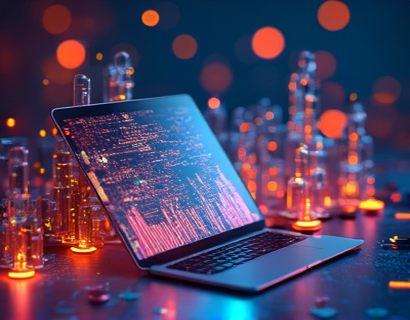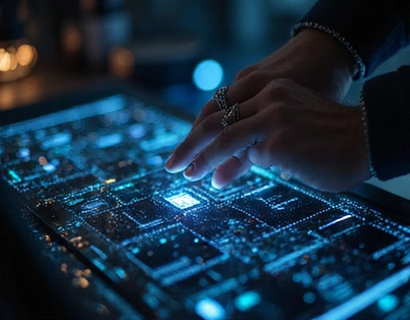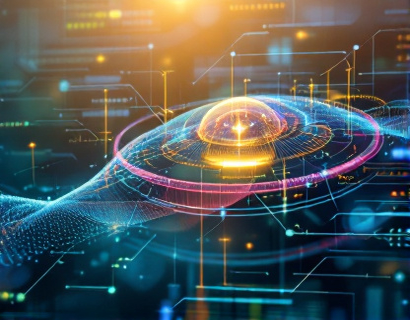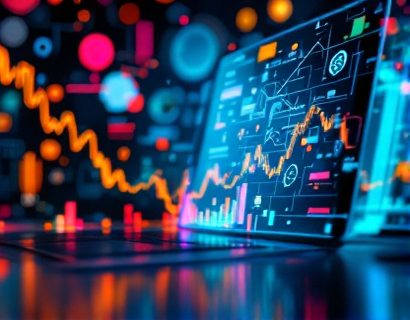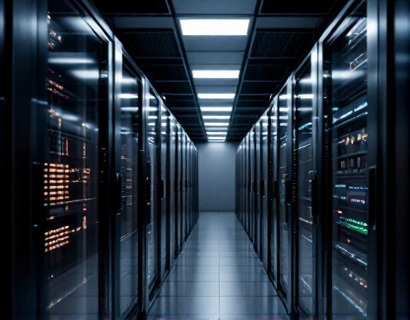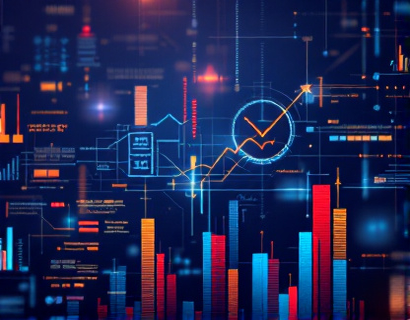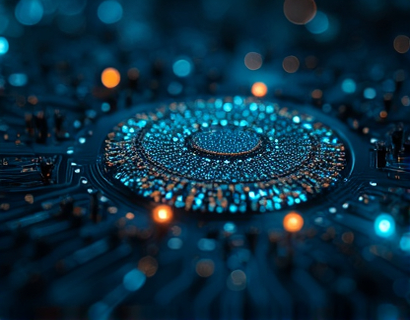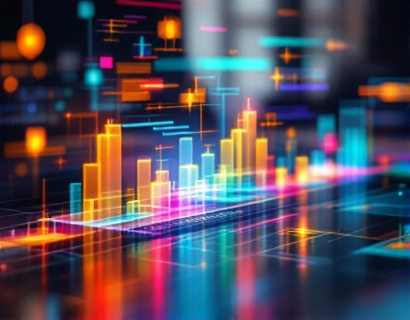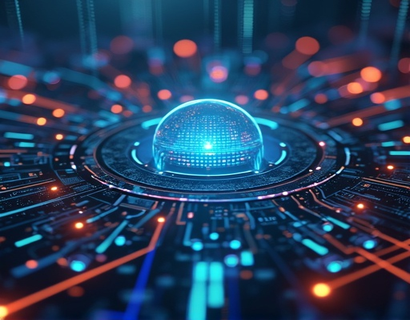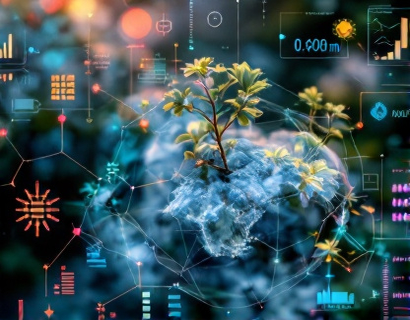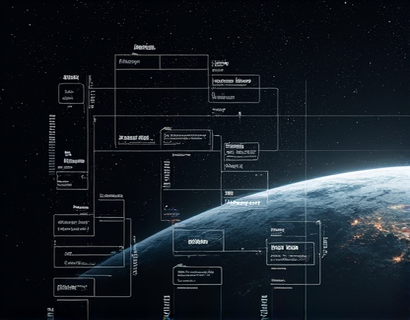AI and Crypto: A Synergistic Force Reshaping Digital Experiences
The intersection of artificial intelligence and cryptocurrency is giving rise to a new era of digital transformation, where the boundaries of technology are being redefined. This fusion is not just about combining two advanced fields but creating a synergy that enhances user experiences, secures transactions, and opens up new possibilities in the realm of connected technologies. As we delve into this topic, it's essential to understand the individual roles of AI and crypto before exploring their combined impact.
Understanding Artificial Intelligence
Artificial intelligence, or AI, refers to the simulation of human intelligence processes by machines, particularly computer systems. These processes include learning, reasoning, problem-solving, perception, and language understanding. AI technologies encompass a broad range of tools and techniques, from machine learning and deep learning to natural language processing and computer vision. The goal of AI is to create systems that can perform tasks that traditionally required human intervention, thereby increasing efficiency, accuracy, and decision-making capabilities.
Exploring Cryptocurrency
Cryptocurrency, on the other hand, is a digital or virtual currency that uses cryptography for security. It operates on a decentralized network, typically a blockchain, which ensures transparency, immutability, and security of transactions. Bitcoin, launched in 2009, was the first and most well-known cryptocurrency, but since then, thousands of alternative coins (altcoins) and tokens have emerged, each with unique features and use cases. Cryptocurrencies are not controlled by any central authority, making them resistant to government interference and manipulation.
AI in Cryptocurrency: Enhancing Security and Efficiency
The integration of AI into cryptocurrency systems is revolutionizing the way transactions are processed and secured. AI algorithms can analyze vast amounts of data to detect patterns and anomalies, which is crucial for fraud detection and preventing cyber attacks. For instance, machine learning models can be trained to identify suspicious activities in real-time, enhancing the security of crypto exchanges and wallets. This proactive approach to security is vital in an industry where the risk of hacking and fraud is ever-present.
Beyond security, AI is improving the efficiency of cryptocurrency networks. Smart contracts, self-executing contracts with the terms directly written into code, can be optimized using AI to reduce execution times and costs. AI can also help in optimizing mining operations by predicting energy consumption and adjusting resources dynamically, making the process more sustainable and cost-effective. Additionally, AI-driven predictive analytics can forecast market trends and price movements, providing valuable insights for investors and traders.
AI-Powered Crypto Assets: Tokenization and Beyond
One of the most exciting areas where AI and crypto intersect is in the tokenization of assets. Tokenization involves representing physical or digital assets as tokens on a blockchain, enabling fractional ownership and easier trading. AI can enhance this process by providing sophisticated valuation models and risk assessments, making the tokenization of real-world assets more accessible and reliable. For example, real estate, art, and even intellectual property can be tokenized, opening up new investment opportunities and increasing liquidity.
Moreover, AI can create more interactive and utility-rich tokens. These tokens, often referred to as utility tokens, can be used within specific ecosystems to facilitate transactions, access services, or gain privileges. AI can enhance these tokens by integrating smart features, such as adaptive pricing, personalized recommendations, and automated execution of tasks, thereby creating a more seamless and user-friendly experience.
Enhancing User Experiences with AI in Crypto
The user experience in the crypto space is often criticized for being complex and intimidating. AI can play a pivotal role in simplifying these interactions. Chatbots powered by natural language processing (NLP) can provide 24/7 customer support, answering queries and guiding users through the crypto landscape. These chatbots can understand and respond to user requests in a human-like manner, making the process more intuitive and accessible.
Personalization is another area where AI shines. By analyzing user behavior and preferences, AI can tailor the crypto experience to individual needs. For instance, a crypto portfolio management app can use AI to suggest optimal asset allocations based on a user's risk tolerance, investment goals, and market conditions. This level of personalization not only enhances user satisfaction but also increases the likelihood of user retention and engagement.
Decentralized Finance (DeFi) and AI
Decentralized Finance (DeFi) is a rapidly growing sector within the crypto ecosystem, aiming to create financial systems that are transparent, accessible, and decentralized. AI can significantly enhance DeFi platforms by improving risk management, optimizing trading strategies, and automating complex financial operations. For example, AI-driven algorithms can dynamically adjust collateral requirements in decentralized lending protocols, reducing the risk of defaults and ensuring the stability of the system.
AI can also facilitate the creation of more sophisticated financial products within DeFi, such as AI-powered derivatives and insurance products. These products can offer tailored solutions to users, providing better risk management and potential returns. The ability of AI to process and analyze vast amounts of data in real-time makes it an invaluable tool in the development of these advanced financial instruments.
Cross-Chain Interoperability and AI
One of the major challenges in the crypto space is the lack of interoperability between different blockchain networks. AI can help bridge this gap by developing intelligent protocols that enable seamless communication and data exchange between disparate chains. This cross-chain interoperability is crucial for building a unified and interconnected crypto ecosystem, where users can seamlessly move assets and services across different platforms.
AI can also optimize the process of cross-chain transactions by predicting network congestion, optimizing gas fees, and ensuring the fastest and most secure transfer of assets. This not only improves the user experience but also makes the crypto ecosystem more efficient and user-friendly.
AI in Crypto Art and NFTs
The rise of non-fungible tokens (NFTs) has brought a new dimension to the crypto world, particularly in the realm of digital art. AI-generated art is a fascinating intersection of these two technologies. AI algorithms can create unique and intricate artworks, which can then be tokenized and sold as NFTs. This not only opens up new avenues for artists but also provides collectors with one-of-a-kind digital assets.
AI can also enhance the authenticity and provenance of NFTs by integrating blockchain-based verification systems. These systems can ensure that the ownership history and authenticity of an NFT are transparent and tamper-proof, adding value to the digital art market. Additionally, AI can curate and recommend NFTs based on user preferences, making the discovery process more engaging and personalized.
Future Prospects: AI and Crypto Convergence
The future of AI and crypto integration holds immense potential. As AI technologies continue to advance, we can expect even more sophisticated applications in the crypto space. One promising area is the development of AI-driven decentralized autonomous organizations (DAOs), which combine the power of AI with the decentralized governance models of DAOs. These organizations can make data-driven decisions, optimize resource allocation, and enhance community engagement, creating more resilient and adaptive crypto ecosystems.
Another exciting prospect is the integration of AI with quantum computing, which could revolutionize the way cryptographic algorithms are designed and implemented. Quantum AI could potentially break current cryptographic codes, necessitating the development of quantum-resistant algorithms. This convergence could lead to a new generation of ultra-secure crypto systems, ensuring the integrity and privacy of digital transactions.
Furthermore, the combination of AI and crypto can drive innovation in other industries, such as finance, healthcare, and supply chain management. AI-enhanced crypto solutions can provide secure, transparent, and efficient solutions for these sectors, fostering a broader adoption of blockchain technology.
Conclusion
The integration of AI and crypto is not just a technological trend but a transformative force that is redefining digital experiences. By enhancing security, efficiency, and user engagement, this synergy is paving the way for a more connected and intelligent world. As we continue to explore the possibilities at the intersection of AI and crypto, the future looks promising, with endless opportunities for innovation and growth. The journey ahead is exciting, and those who embrace this convergence will be at the forefront of the next digital revolution.



